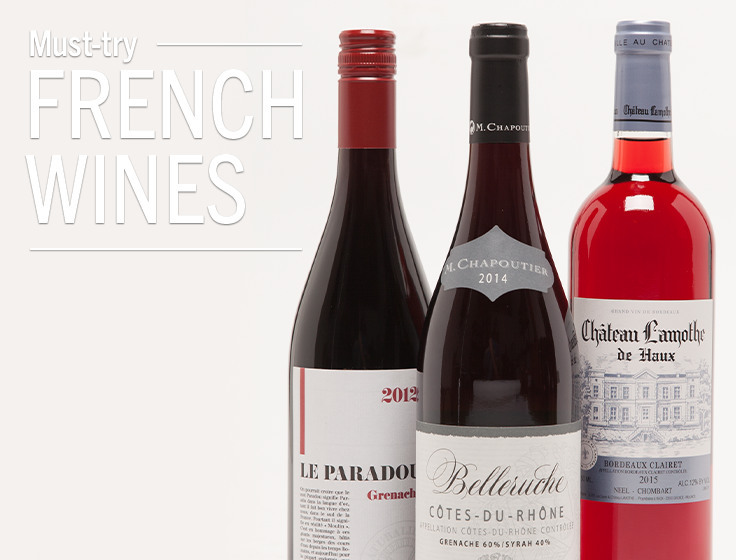Must-try French wines
You can’t go wrong with a French wine! Bill Belkin, category manager for our Wines & Spirits locations, shares his top recommendations.
Ah, France! It’s where it all started for me, at least. Back in 19 seventy-something … well, that only dates me, so let’s just say that French wine and I have been friends for decades. For like art itself, if you have not studied the French winemaking masters, you have not studied wine. Most of the vinifera (read: GRAPES) that we know today comes from France.
For such a relatively small country, France has a diverse climatic pattern that certain grapes love: the maritime influences, the mountains and the rivers all contribute greatly to that undefinable French word “terroir” – which, as near as we can figure, takes into account all the preceding geographic features along with the sun-days, the wind speed and direction, the altitude of the vineyards, the angles those grapes are planted … and of course of key importance, the soil. Different grapes thrive in different soil and the right grape in the wrong soil will not make good wine!
From top to bottom – from the Alsace in the northeast with their steely, mineral-driven whites – specifically Riesling, Gewurztraminers and Pinot Blanc – to the hot, hot climes of the south featuring Grenache, Syrah, Mourvedre and Carignan – France is one large “library” of grape varietals.
Why does the delicate, off-dry Chenin Blanc thrive in and around the Loire Valley adjacent to the eponymous river and why is it never planted in the Rhone? And who said that Sauvignon Blanc tastes best (Pouilly Fume and Sancerre) in the Loire too? Why does the left bank of Bordeaux call Cabernet Sauvignon their “king” and Merlot (right bank), Cabernet Franc, Petit Verdot and Malbec the “princes?”
In Champagne you will find earlier harvests than the rest of the country, as winegrowers search out the very best Chardonnay, Pinot Noir and even the obscure Pinot Meunier grape with additional acidity and vivacity to add sparkle to their famous bubbles. Only wines from the Champagne region can command the name on the bottle.
And one of the great mysteries of the wine world is Burgundy. Southeast of the capital city of Paris, those wonderful “hills of gold” or the Côte-d’Or as they are called … neatly and methodically divided in half with the north called the Côte de Nuits and the south the Côte de Beaune. The great wines of Burgundy are either Chardonnay or Pinot Noir, based with a very specific legal and geographic ways of denoting where the grapes come from; the region, the village, a premier cru vineyard or the top of the heap Grand Cru vineyard – Burgundy wines have an ethereal quality to them and can age for decades.
And let’s not forget the Beaujolais region of far Southern Burgundy, which wines owe their flavors to the Gamay grape. There are 10 villages (or Crus) that have earned the special right to put their name on the bottle superior to the word Beaujolais. Wines like Fleurie, Brouilly and Chiroubles all come from Beaujolais, but you may not know that from the bottle.
All considered, France is a “must drink” when it comes time to select a wine with your next meal. The French, unlike some Americans, would never think of having wine without food and vice versa. So the next time you visit a Lunds & Byerlys Wines & Spirits location, ask the manager for a “Tour de France” – you won’t need your bike!






